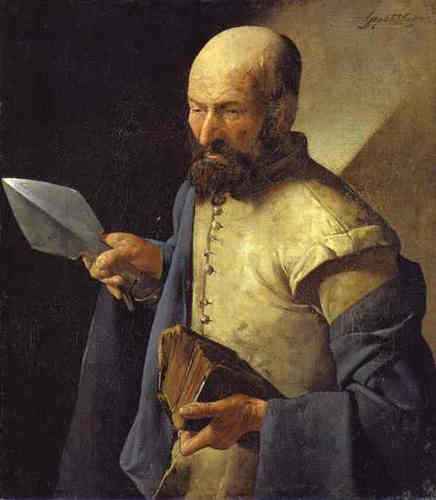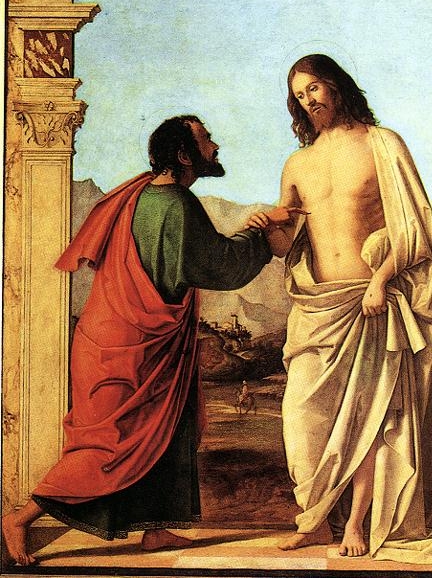Today, an optional memorial of this youthful martyr is permitted. Plans are underway for the relics of St. Maria Goretti to tour Canada next year, including a stop in Ottawa (more details as they become known).

Saint Maria Goretti, Virgin and Martyr
O God, author of innocence and lover of chastity, who bestowed the grace of martyrdom on your handmaid, the Virgin Saint Maria Goretti, in her youth, grant, we pray, through her intercession, that as you gave her a crown for her steadfastness, so we, too, may be firm in obeying your commandments. Through our Lord.
* * *
Maria Goretti (1890-1902) was an Italian girl who died after being sexually attacked at the age of 11. In 1950 she was canonized by Pope Pius XII.
The third of six children of a peasant farmer, Maria was born on October 16 at Corinaldo, some 35 miles inland from Ancona on the Adriatic coast. Life was always a struggle, especially after her father had been reduced to working as a casual labourer.
In 1899 he died of malaria, and the family moved to the village of Le Ferrière, about 18 miles south of Rome. Throughout all their tribulations the Gorettis remained strongly attached to the Faith; and Maria received her first Communion in January 1901.
From infancy the children all helped with the household tasks. Maria looked after the house and her younger siblings when her mother went out to work. The Goretti shared living quarters with another family, the Serenelli, whose son, Alessandro, a farmhand aged 20 in 1902, took an unhealthy interest in Maria. At first he merely pestered her. Then, in the afternoon of July 5, 1902, he turned violent and tried to rape her.
Maria fought him off desperately. “No,” she cried, “it is a sin. God does not want it.” When she insisted that she would die rather than submit, Alessandro seized an awl and stabbed her 14 times.
He then ran off, leaving the grievously injured Maria to be discovered by his father and her mother. Doctors at the nearest hospital did their best, but within a day Maria was dead.
Although in great pain during those last hours, her innate goodness shone through, as she worried about where her mother would stay the night, and declared that she forgave her murderer and hoped to see him in heaven.
Alessandro Serenelli was sentenced to 30 years hard labour, and for some years seemed to be viciously unrepentant.
Then, around 1908, he experienced a vision of Maria in which she handed him 14 lilies, thought to be representative of the number of wounds she had suffered.
From that day onwards Alessandro proved a model prisoner. Released in 1927, he found a place as a gardener and lay-brother in a Capuchin monastery. He made his peace with Maria’s mother, and in 1950 attended Maria’s canonization in the company of her family.
“Always esteem and love purity and virginity,” Pope Pius proclaimed in his address. “Do not be afraid to reject the world’s idols by showing that you belong to a chaste and poor Christ.”
Alessandro Serenelli reinforced this message before he died in 1970, issuing a statement in which he attributed his youthful crime in part to the evil influence of the press, which had offered titillation in place of true morality. (http://www.catholicherald.co.uk/)
* * * * * *
SERRA CONVENTION AT OTTAWA CONGRESS CENTRE,
NOTRE DAME CATHEDRAL BASILICA
Serra's 69th International Convention to be held in Ottawa from July 7-10, 2011
As a result of security concerns regarding the original venue in Jerusalem, the Serra International Convention has recently been transferred to Ottawa.
Mr. John Woodward, the Executive Director of Serra, extends an invitation to Canada’s bishops, priests, vocation directors and laity interested in the promotion of vocations to the priesthood and/or to establishing a chapter of Serra in their diocese or parish to participate as they are able (Cf. schedule below). For further details or to inquire about the convention, please see http://www.serra.org/.
Thursday, July 7, 2011
-------------------------------------------------------------------
6:00 p.m. Opening Mass in the Cathedral Basilica of Notre Dame. Principal Celebrant: Most Reverend Terrence Prendergast S.J., Archbishop of Ottawa; all welcome.
Friday, July 8, 2011 [Sessions in the Ottawa Convention Centre]
-------------------------------------------------------------------
10:15 a.m. State of Serra: President John “Tomi” Asenuga
2:30 p.m. General Session Speaker to be confirmed
8:00 p.m. Holy Hour for Vocations and Benediction. Celebrant: Fr. Augustine Abayomi, Chaplain, Serra Club of Ibadan [Notre Dame Cathedral Basilica] All welcome.
Saturday, July 9, 2011
-------------------------------------------------------------------
8:45 a.m. Keynote Address: Most Reverend Gary Gordon, Bishop of Whitehorse
2:15 p.m. General Session: Serra around the World
4:15 p.m. Closing Mass in the Cathedral Basilica of Notre Dame; Principal Celebrant: Bishop Gary Gordon. All welcome.
7:30 p.m. Annual Banquet
The Serra CommunitySerra International ('Serra') is formally recognized by the Holy See as the global lay apostolate for vocations in the Catholic Church. Serra is a voluntary association of some 20,000 Catholic laymen and laywomen called Serrans.
Each Serran is a member of a local Serra Club sanctioned by the Ordinary of the diocese in which the Serra Club is located.
Since it was founded in 1935, in Seattle, Washington, U.S.A., Serra has chartered 1,109 Serra Clubs in 46 countries on six continents.
Serra's objectives and purposes are:
1.To foster and promote vocations to the ministerial priesthood in the Catholic Church as a particular vocation to service, and to support priests in their sacred ministry
2.To encourage and affirm vocations to consecrated religious life in the Catholic Church
3.To assist its members to recognize and respond in their own lives to God's call to holiness in Jesus Christ and through the Holy Spirit














